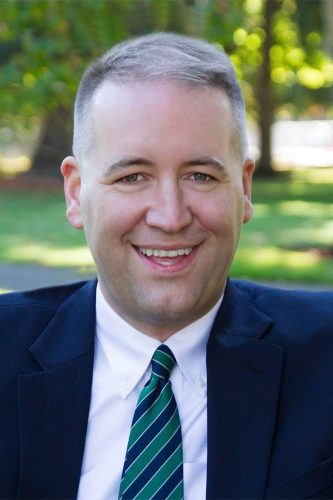
Oregon State Treasurer Tobias Read lights up with excitement when I tell him I signed up for OregonSaves a few months ago.
I qualify that fact by saying there’s not much money in my account, but Read, sounding like quite the economist, reassures me by suggesting I should look at the long run — a term he echoes throughout our brief interview.
The first-ever state-sponsored retirement program in the U.S. celebrated its two-year anniversary in July. On Aug. 6 the Oregon Retirement Savings Board, which oversees the retirement program, held a public meeting in Springfield to cover the growth and implementation of the program.
Since the start of OregonSaves, the retirement program has reached a total of $25 million saved by all participants. Five states and two cities have followed the path set by OregonSaves.
According to the Oregon State Treasury, one million workers didn’t have access to a work-based retirement plan before OregonSaves started.
“OregonSaves doesn’t solve all of our issues. But it’s a start, and it’s a significant benefit and step forward,” he says. “We’re now adding in savings of $3 million a month.”
The OregonSaves rollout continues and will be available for employers with five to nine employees on Nov. 15, and zero to four on May 15, 2020. Employers can file an exemption if they offer employees a federally recognized retirement plan.
Noncompliant employers that don’t enroll can now be penalized. On May 22, Gov. Kate Brown signed SB 164 into law. The law established a procedure to file complaints against employers that don’t enroll in OregonSaves, which can be a penalty of $100 per eligible employee.
Penalties against an employer can’t exceed $5,000 a year, according to the law.
OregonSaves is a Roth IRA, so contributions are pre-taxed. That means withdrawals aren’t considered taxable income. Participants sometimes withdraw money, thus treating their account like a rainy day fund, Read tells me.
“We don’t want people to think of it as an emergency fund,” Read says. “But it’s a heck of a lot better than taking a payday loan.”
Data from the Aug. 6 meeting does show that when lump sums are withdrawn, participants still contribute monthly. Read says getting in the habit of saving at an early stage is important for those who are in the starting stages of a career.
Most of the participants in the retirement program are 18 to 35 years old, according to employee opt-in data. The number of opt-ins peaks at ages 19 to 21. Read says activity from this demographic might be related to the number of employees in the food industry, which often doesn’t offer retirement packages.
“Getting younger people started is exactly what we’re trying to do,” he says.
Half of the people in Oregon don’t have any retirement, and when people are offered a retirement program, they’re 15-times more likely to participate, he adds.
Those who are more likely to opt out of OregonSaves are at retirement age or older, or they may already have a retirement package through their employer, according to data from the Oregon State Treasury.
OregonSaves offers participants three savings options and the default option is the Capital Preservation Fund, which he calls the “safest of the safe” option.
Read says the program interacts with people who’ve never invested before, and he doesn’t want someone’s first statement to act as a deterrent from future investments. And he adds that keeping the options simple avoids a potential participant from feeling overwhelmed.
Read says he’s not looking to expand investment options since the program’s main goals right now are to increase the number of savers and assets.
The Aug. 6 Oregon Retirement Savings Board meeting followed a terrible market performance on Wall Street in which investors reacted to the ongoing U.S.-China trade war, but Read says he’s not concerned on the impact of OregonSaves.
“As the investment officer for the state, I’m not concerned about one day. We’re investing for the long run,” he says.
OregonSaves has participants from 47 U.S. states since anyone employed in an Oregon-based company can participate. Some of these out-of-state residents are remote workers, migrant and seasonal farmworkers, as well as those who live across state lines.
When asked if this would result in people free-riding a state service, Read tells me the program doesn’t cost taxpayers. Although OregonSaves borrowed from the Legislature and still has to pay that money back, the retirement program charges participants one-percent of assets a year — or $1 for every $100 invested.
In fact, Read says, the program works toward making people more self-sufficient in the long run.
“When people have dollars saved for retirement, they’ll need less help from the state,” he says. “In the long run, it’ll be a benefit to the state budget.”